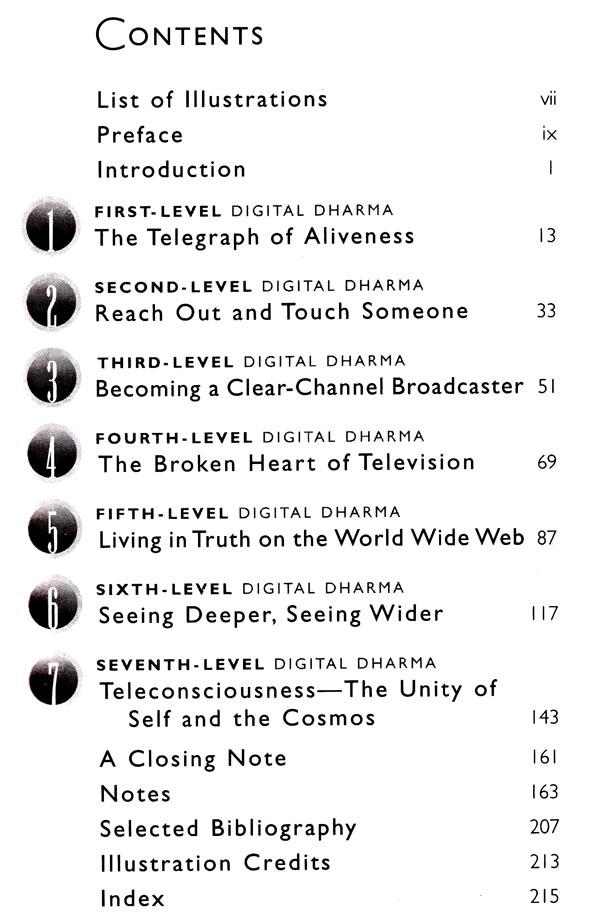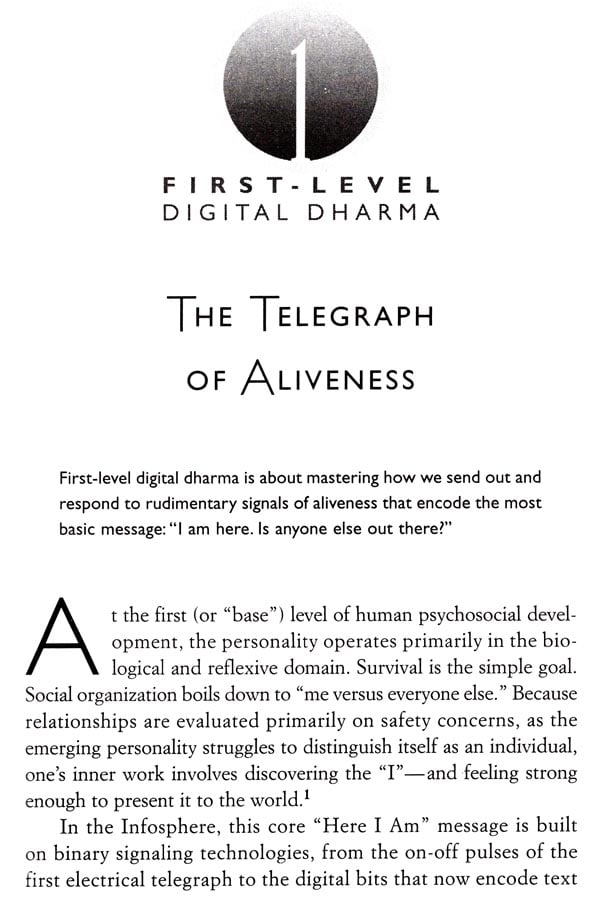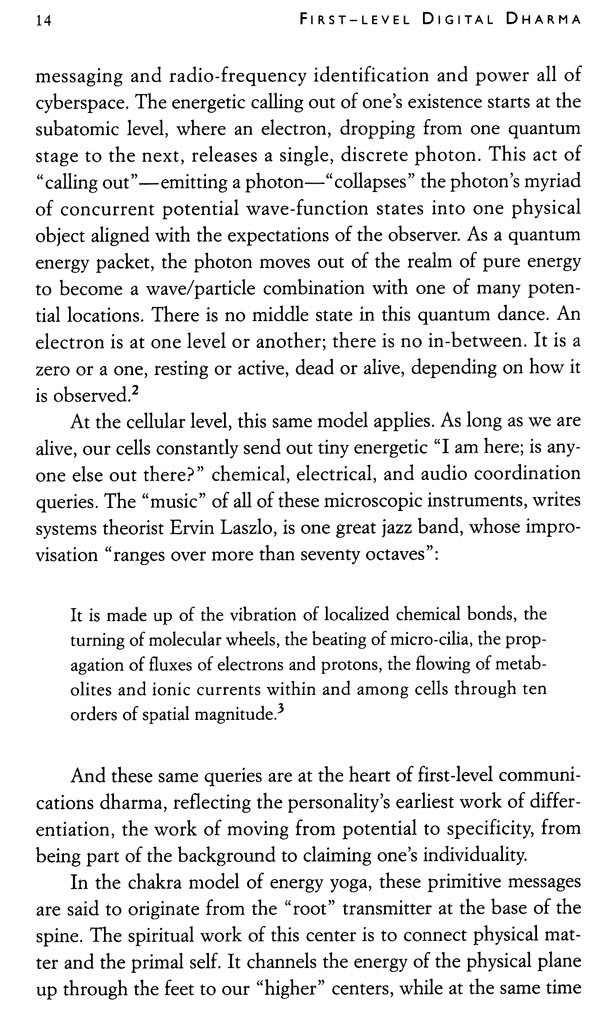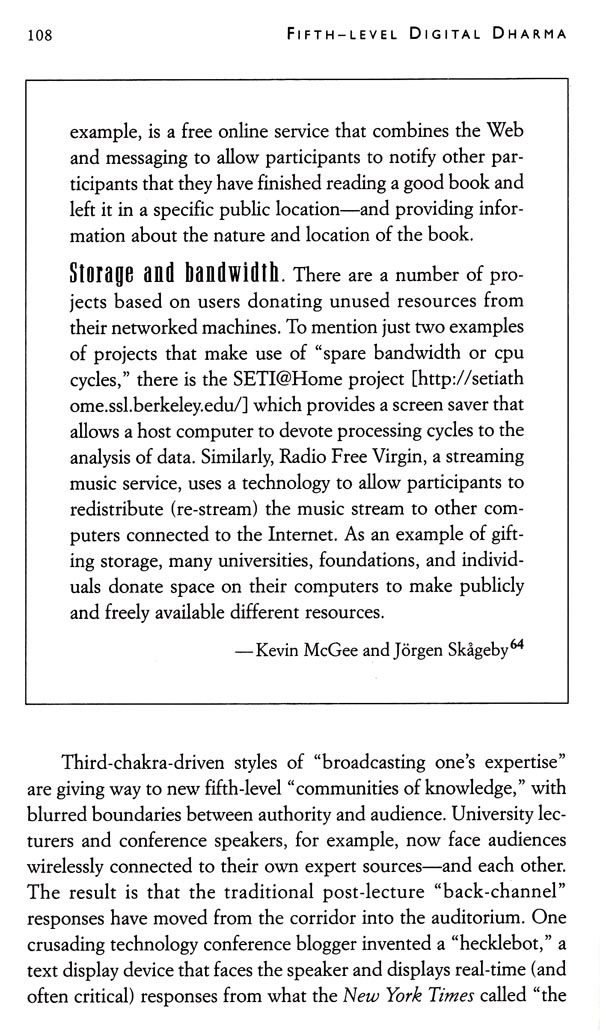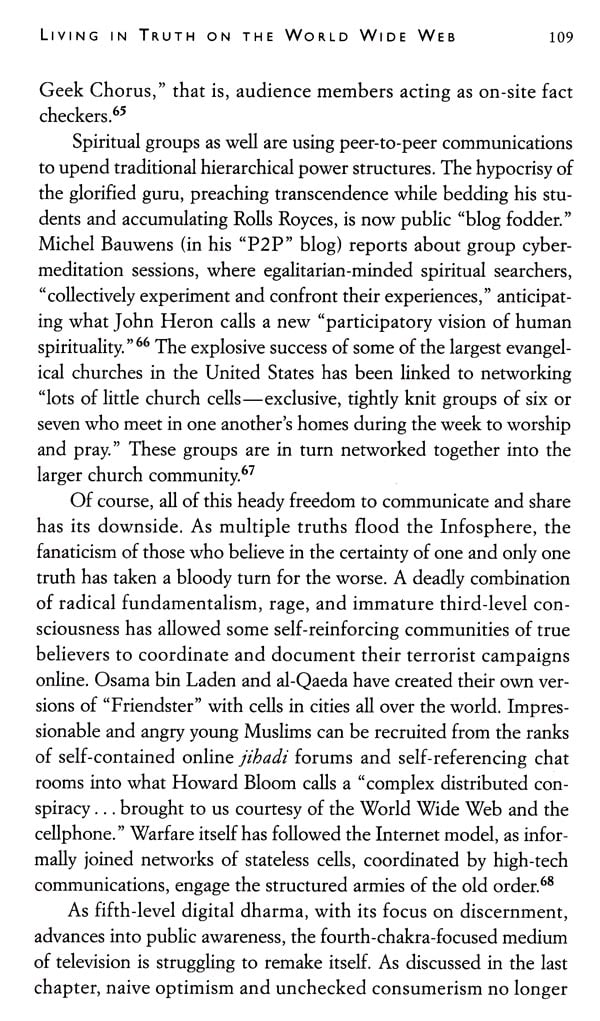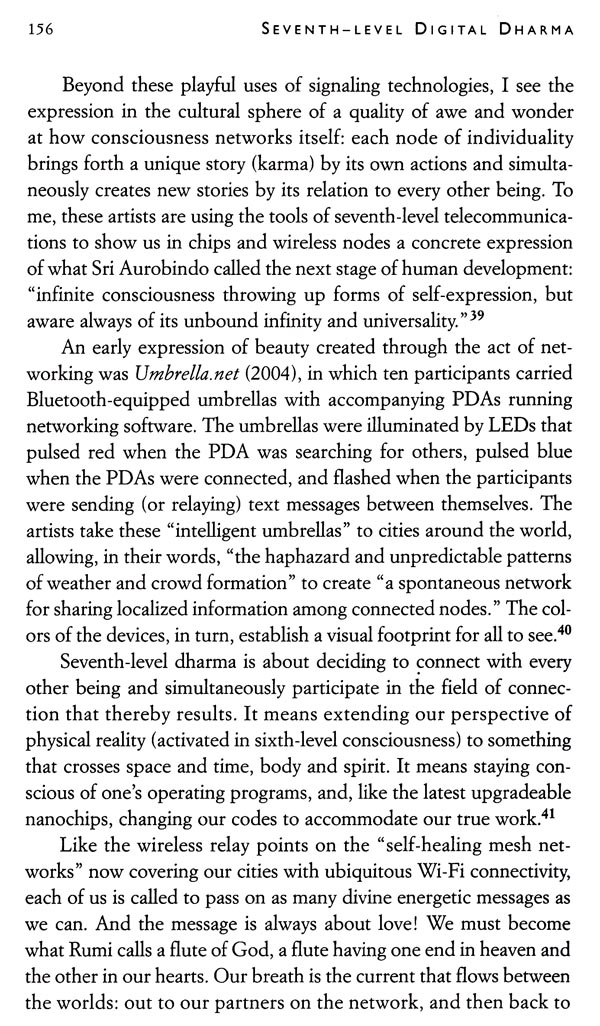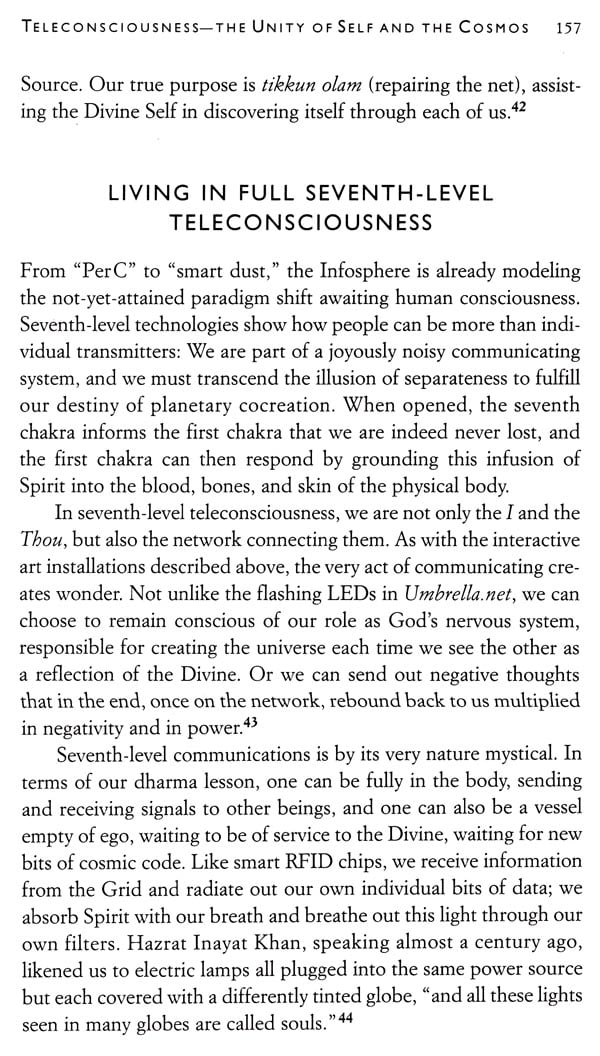
Digital Chakras (A Mystic Looks at The Infosphere)
Book Specification
| Item Code: | NAR754 |
| Author: | Steven Vedro |
| Publisher: | Jaico Publishing House |
| Language: | English |
| Edition: | 2013 |
| ISBN: | 9788184952698 |
| Pages: | 238 (22 B/W Illustrations) |
| Cover: | PAPERBACK |
| Other Details | 8.50 X 5.50 inch |
| Weight | 300 gm |
Book Description
You don't have to know much about technology to benefit from this witty exploration of how we can develop a "yoga of teleconsciousness" to become centered in a frantic world. The Info sphere not only affects consciousness, it also reflects it, says Steven Vedro, and it provides teachings for the next step on our journey to wholeness. His guiding metaphor is the chakra system, the body's esoteric energy centers located at the spine base, pelvis, solar plexus, heart, throat, forehead, and crown. He links each to a form of communication:
- the lowest chakras, concerning safety and survival, relate to telegraphy and telephony
- the middle chakras, concerning power, love, and discernment, relate to radio, television, and the Internet
- the highest chakras, concerning the most evolved consciousness, relate to the newest technologies of digital signal coding, smart devices, and the always-on intelligence of grid computing
To open and heal our internal channels, Vedro provides visualization exercises in each chapter. Now, when the media seems increasingly intrusive, this ingenious book may help us use it to become more compassionate, more balanced, and more aware.
STEVEN VENN is a retired technology advisor to government agencies, and broadcasting stations in planning distance learning networks and digital media initiatives. While designing satellite and fiberoptics networks by day, in his personal time he focused on more subtle light and energy systems. His spiritual transformation journey includes thirty years of meditation practice and auric attunement and esoteric energy healing study. Steven is a poet of blessings, a Ritual Elder in the Mankind Project an international men's healing community, and a student in the Ruhaniat Sufi Order.
I have always loved the stuff of communications technology. As a child, I was content to sit for hours in front of the big shortwave set in my uncle's living room searching for voices from far away. As a ten-year-old I learned Morse code and as a teenager became involved in pirate radio, regularly ruining the neighborhood TV reception whenever I started my home-brew broadcasts. In college, I spent most of my time at the campus FM station. My summer work as a film projectionist and TV cameraman (I covered home plate at Shea Stadium in New York) paid for much of my tuition. I have produced television programs, designed educational video net-works and Internet sites, and helped PBS stations make the transition to digital broadcasting. I'm the kind of techno-aficionado who can enjoy a walk down a country lane gazing at the wildflowers-while also calculating the line loss in the cable TV wires on the poles overhead.
But even in the midst of my technology adventure, I knew something was missing in my approach to life. I began studying meditation, which eventually led me to the study of Sufism, esoteric healing techniques, and the philosophy of tantra, or energy yoga, and its system of network concentration centers called the chakras. Suddenly words such as channeling, radiation, and field intensity took on meanings quite different from the technical terms I had mastered years before.
While this new work opened my heart, I was not at peace with the continued separation between my vocation and my spiritual life. I did not want to quit my "day job" as an educational technology consultant; I was too excited about helping schools and public broadcasting stations build new digital networks. On the other hand, the kinds of experiences I was having as a student of energetic healing touched a deeper desire to be of personal service, one heart at a time. I was also bothered by my "more spiritual" friends' reaction to technology. It troubled me that they took pride in disdaining computers and not owning televisions.
I saw no way to bring these two worlds together until I started rereading some of the key books of my college years-the works of Lewis Mumford and Marshall McLuhan on technology and civilization-through the lens of my new teachers: masters such as Sri Aurobindo, the Theosophists, Pierre Teilhard de Chardin, and today's scholars of notice consciousness, including Michael Talbot, John White, Ken Wilber, Peter Russell, Duane Elgin, Christian de Quincey, and Howard Rheingold.1 I returned to the field of media ecology that had stimulated me so much in the 1970s and '80s and gobbled up dozens of new books on the social impacts of the Internet, "flash mobs," "small networks," cell phones, and the alpha-bet itself. Then, one night, I had a defining dream:
An electronic web now surrounds our planet. Our ideas travel instantaneously to all points of the globe on electromagnetic waves and pulses of light. In the last decade, communications networks have advanced from wires to fiber optics, from interconnected radio and television grids to a world of billions of wirelessly communicating sensory devices, each with its own address in cyberspace. These collective systems for sharing thought have become the foundation of a new realm-the -Infosphere." Emerging from what French philosopher-priest Pierre Teilhard de Chardin called the shared "noosphere" of collective human thought, invention, and spiritual seeking, the Infosphere is now a field that engulfs our physical, mental, and etheric bodies and affects our dreaming and our cultural life. In the mid-1960s, media sage Marshall McLuhan wrote that our nervous systems have been "extended" (via the "electric technologies" of sound and sight) beyond our physical bodies, drawing us all into a "global embrace":
Each new technology, he claimed, amplifies and extends the reach of different sense organs, changing our perceptions of ourselves and of the world.
